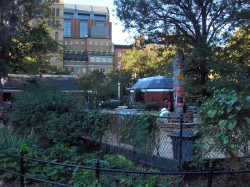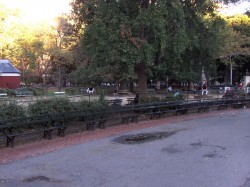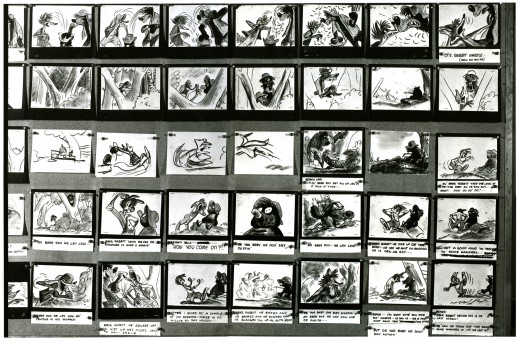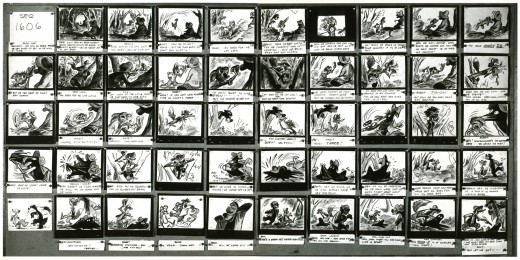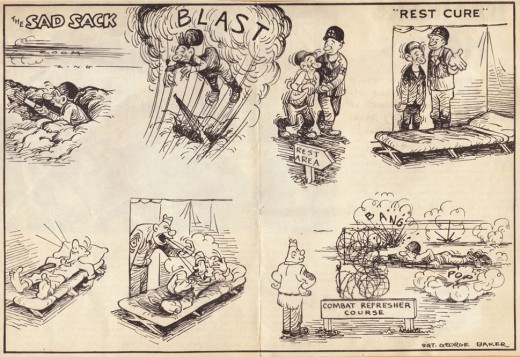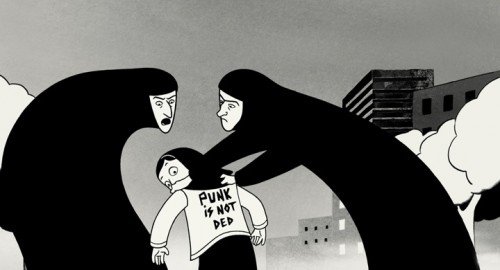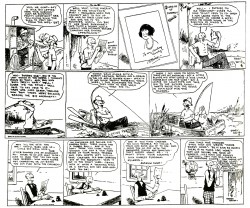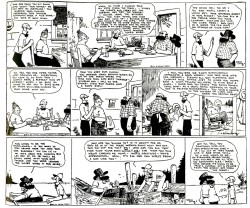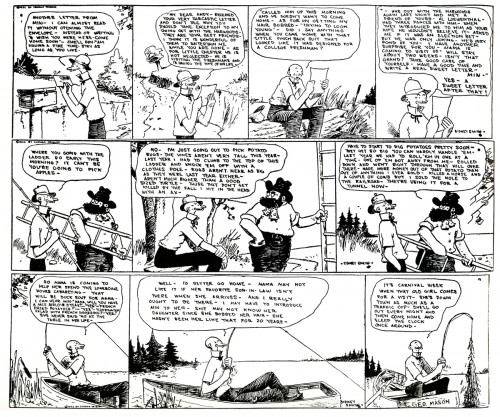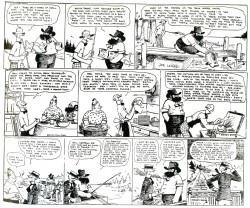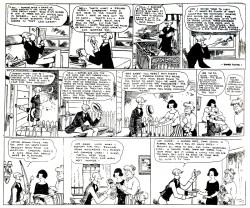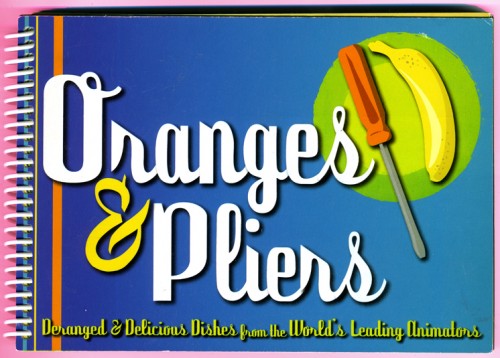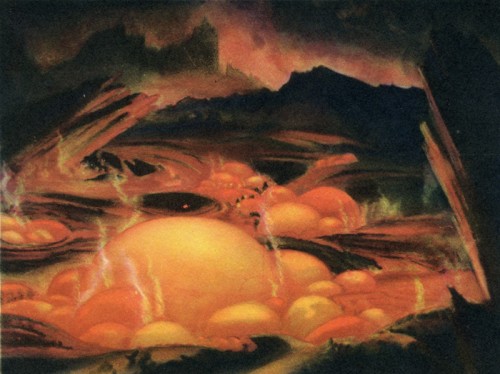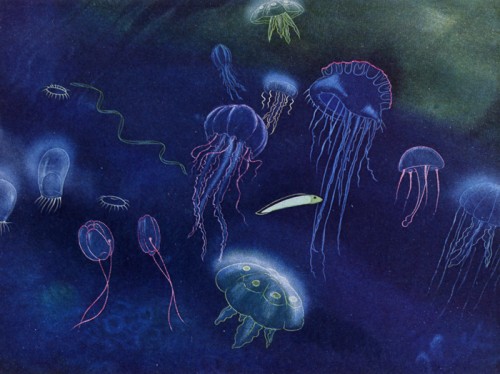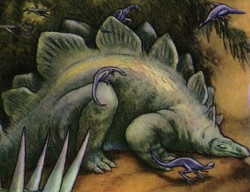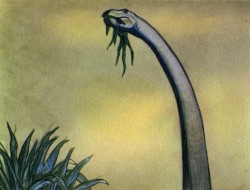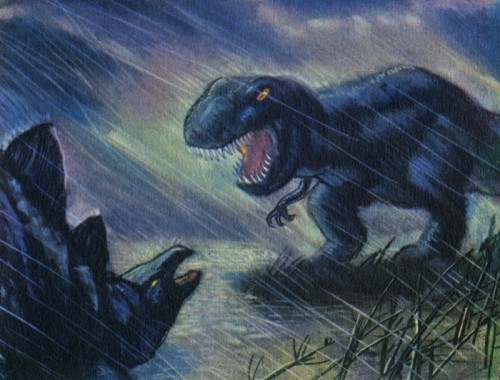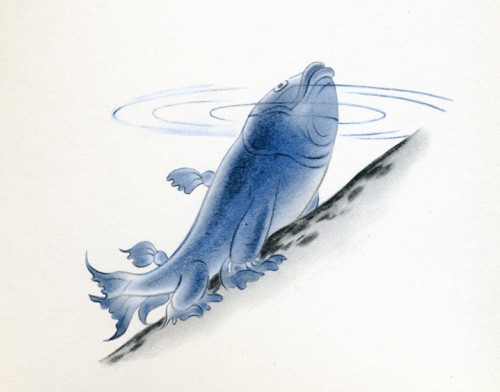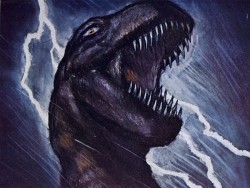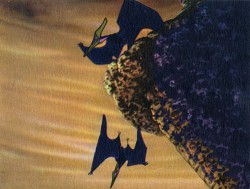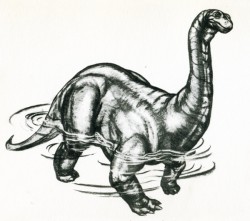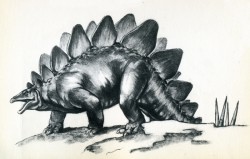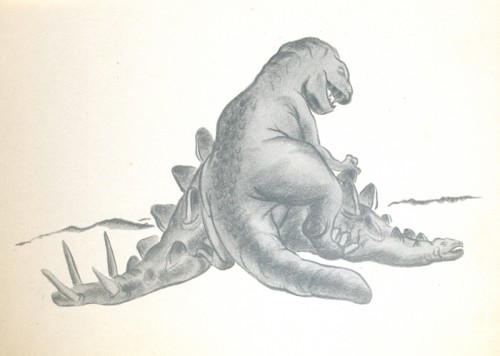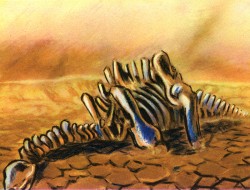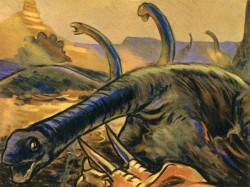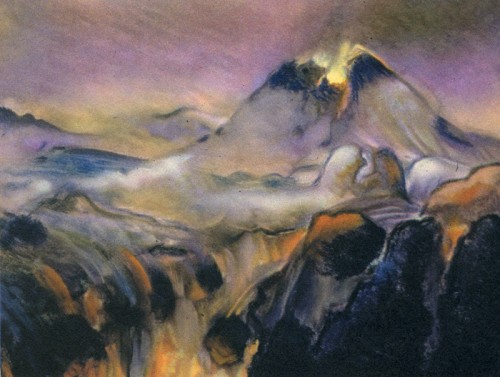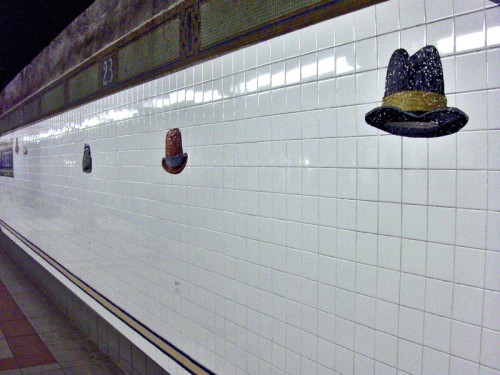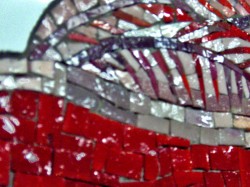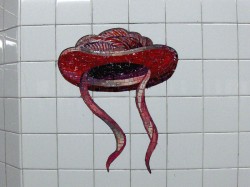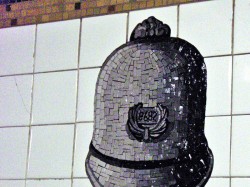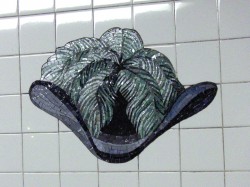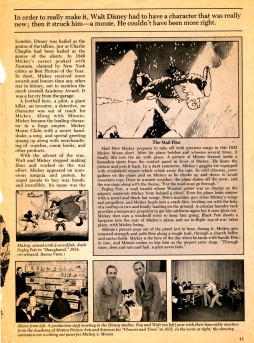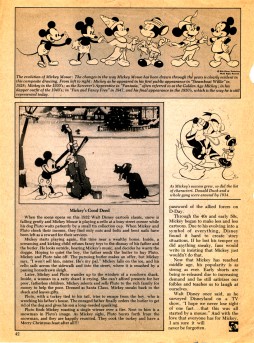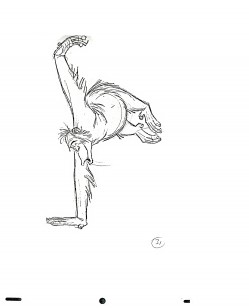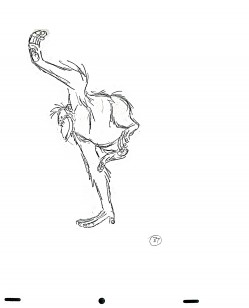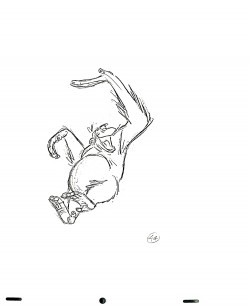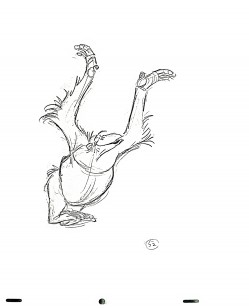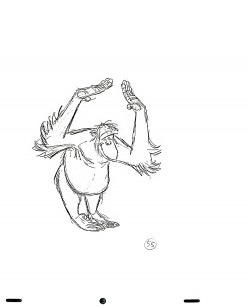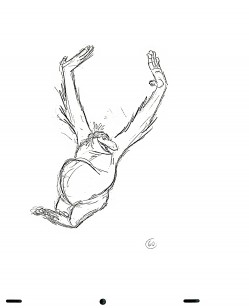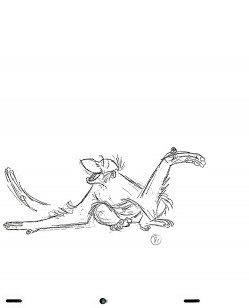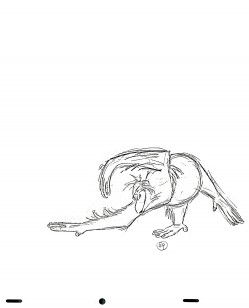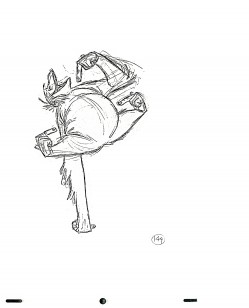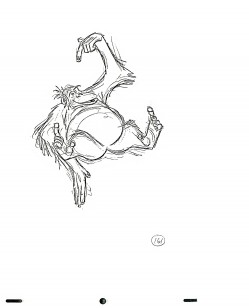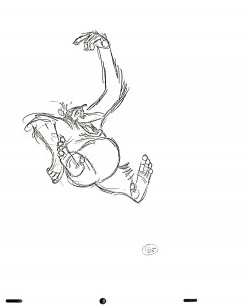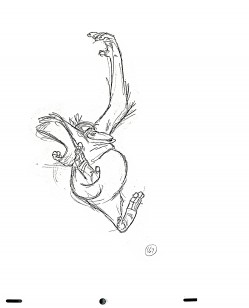Monthly ArchiveOctober 2007
Photos 21 Oct 2007 09:50 am
Dogparks PhotoSunday
- A couple of weeks ago, I focused the Sunday photos on the new type of children’s playgrounds. In the time that playgrounds have changed to what they currently are, dogparks have sprung up in the City’s parks. It makes sense. Anthropologist, Elizabeth Marshall Thomas in her book, The Hidden Lives of Dogs, writes that all a dog really wants is other dogs. Dogparks give city dogs a chance to play with other dogs.
I pass several on my daily routine, and they’re all different.
Madison Square Park
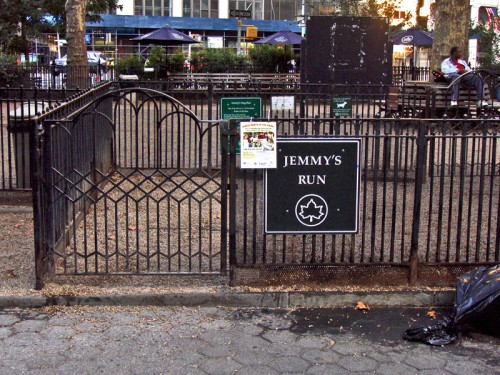
Madison Square park offers a very large and friendly space with “Jemmy’s Run.”
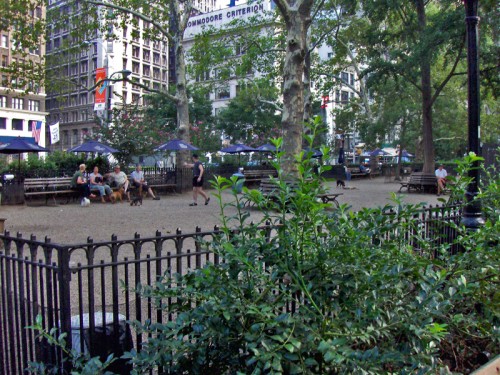
There’s a lot of run-around areas for the dogs and plenty of seating for the owners to
mix and chat.
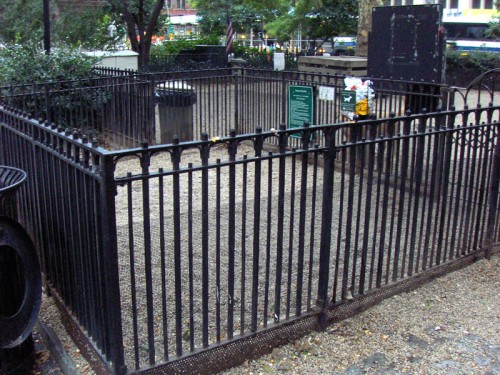
You enter the fenced area through a small square with two gates. They ask that you open only one gate at a time so that the dogs can’t run out and escape the space.
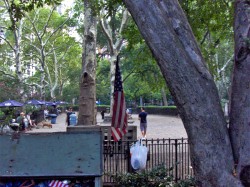 _
_ 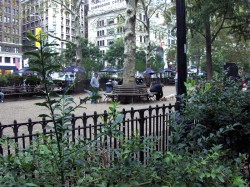
There’ are a lot of trees and shrubery, plenty of plants. There’s an attendant who constantly keeps the space clean. It’s a totally pleasant space where I can imagine dogs have a blast.
Washington Square Park
Washington Square Park offers a couple of dogparks. One quite large, the other quite small.
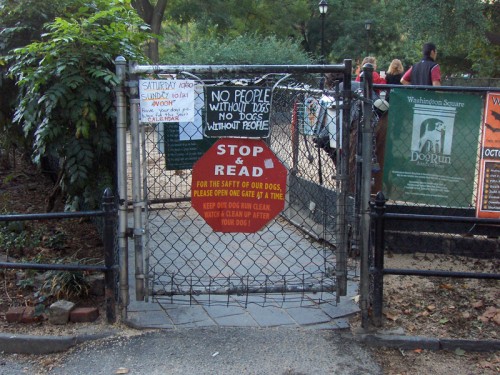
The larger area looks well worn as evidenced by this front gate, which like all the others has two portals so that the dog can’t escape easily.
Like the other special areas in this park, they try to separate the outside from the inside with foliage. I had to stand on a high ground to be able to snap the second of the above shots.
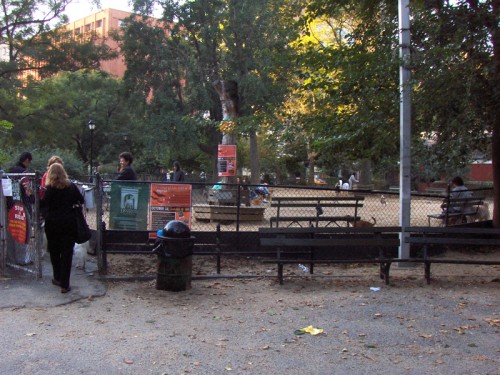
This is quite a populated area. Lots of larger dogs run about. Not a lot of sitting space for the owners.
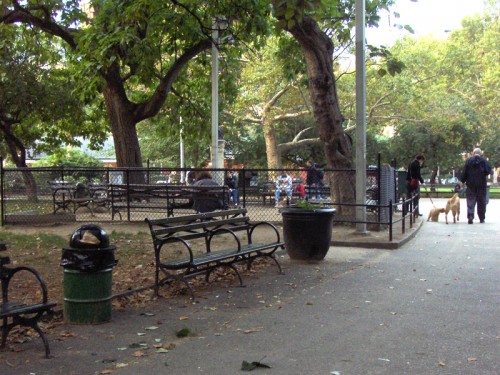
By comparison, this second are, a bit more centrally located in the park, is very small, no more than 1/8th the area of the other.
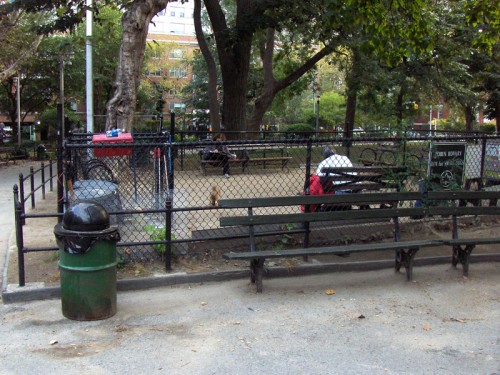
The view from the opposite side doesn’t make it feel any larger. Park benches surround
the area where owners can sit watching the dogs play.
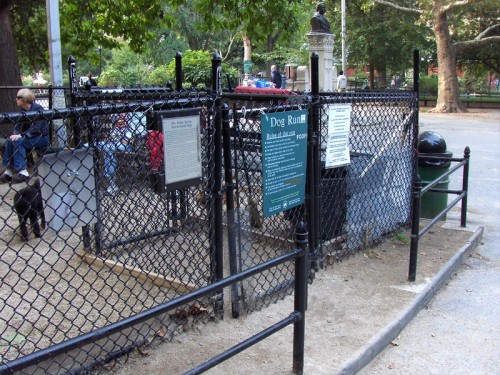
As with the other dogpark, there are two gates to enter. It’s designed to make sure your dog won’t escape, running wild around the park. This little squared off area seems no larger than a closet. I can’t imagine two dogs could pass through at the same time.
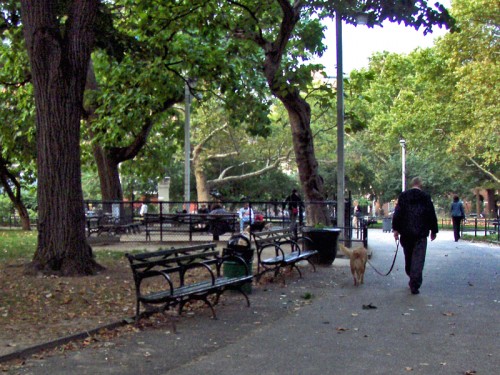
I have to say that despite the size of this space, I once came upon about eight small dogs running back and forth in a pack; they were having a lot of fun.
NYU Housing complex
The only other dogpark in the nearby area is one adjoining a housing complex which belongs to NYU. They have a relatively large space for dogs to run, and it’s often full of animals and their owners.
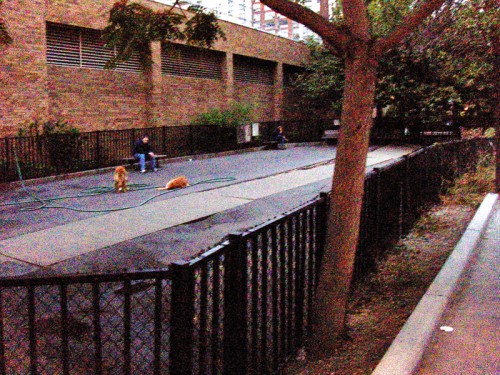
I had to push these images a bit since it was dark when I photographed them. You can, however, see here how large the space is.
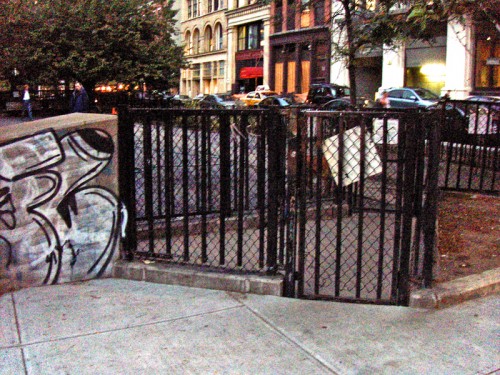
The entrance is the same as the others. There are two portals so that you can let the dog off the leash once you’ve passed through the first gate, and let the dog into the area via
the second gate.
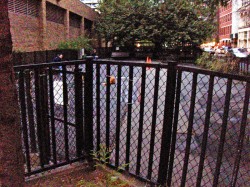 _
_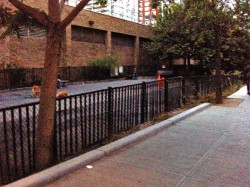
Not many dogs were here when I photographed it, but I’ve often seen a lot of dogs running around the concrete park.
Animation Artifacts &Disney &Story & Storyboards 20 Oct 2007 08:14 am
Bill Peet’s Tar Baby pt 1
- I’ve been an enormous fan of Bill Peet‘s work. Thanks to John Canemaker I have this storyboard from Song of the South. It’s the Tar Baby sequence.
One page is reworked; the others develop beautifully.
I’ve split the sequence I have into two posts. It takes a while to scan and reconstruct these very large stats in photoshop. I’ll post the remainder of the sequence I have on Monday.
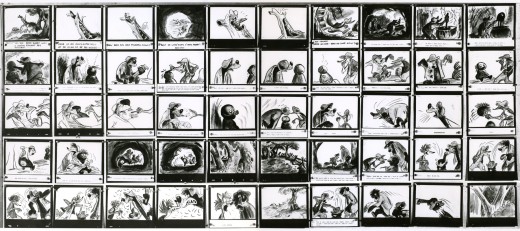
(Click images to enlarge so that you can read them.)
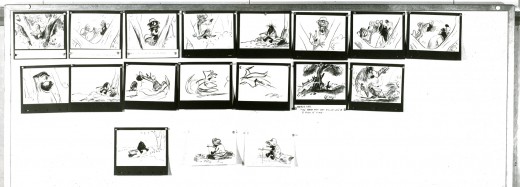
Here we have a reworking of the second board – or, at least, a repositioning and editing of some of the drawings. Unfortunately, the original stat here is blown out a bit (making some of the writing invisible) and smaller (meaning I blew it up a bit larger.) However, you can see the drawings better in in the first board.
Comic Art &Festivals &SpornFilms 19 Oct 2007 07:53 am
Pabs & Sad Sack & Treasures
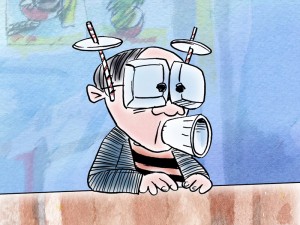 – The Heartland Film Festival opens tomorrow in Indianapolis. I have a real connection to this Festival and Jeff Sparks, the Festival Director. I’ve won their Crystal Heart Award four times in the past, and I’ve won the audience choice award once. I’ve been a judge at the Festival twice. They’re a great group of people, and they consistently put together a great program of excellent films.
– The Heartland Film Festival opens tomorrow in Indianapolis. I have a real connection to this Festival and Jeff Sparks, the Festival Director. I’ve won their Crystal Heart Award four times in the past, and I’ve won the audience choice award once. I’ve been a judge at the Festival twice. They’re a great group of people, and they consistently put together a great program of excellent films.
Starting Saturday, my new short Pabs’ First Burger will premiere, playing once at 3PM and again at 9PM. It will screen a half dozen times total. It’s on a bill with the documentary Note By Note.
I just wish I could be there to introduce it.
This short will also open the program at the Museum of Modern Art on November 12th when John Canemaker chats with me about my work. So, if you can’t make it to Indianapolis, you can see it at MOMA.
At Live Journal, there’s an interesting collection of some of George Baker‘s Sad Sack comic strips as seen in Yank Magazine during WW II.
As a kid, I had an odd grouping of comic books to read regularly. I wasn’t really into the superhero strips, I appreciated more the cartoon strips. Naturally, I bought Carl Barks’ Donald Duck; they had the best stories and some great artwork. Little Lulu also appealed to me, and I read every issue. (Has there ever been a story on her creator, Marge?) In a pinch, I’d read Hank Ketchum’s Dennis the Menace, but I didn’t love it as much as others. When I got a little older, I read Archie.
Sad Sack was also among those comics I enjoyed. It’s interesting how a strip designed specifically for soldiers would have a life after the War. I guess the good writing and funny drawings kept it alive. Beetle Bailey popped up in 1950, and I suppose it really was nothing more than a rip off of Sad Sack. Although the drawings weren’t as funny, that strip offered enough to make it popular as well.
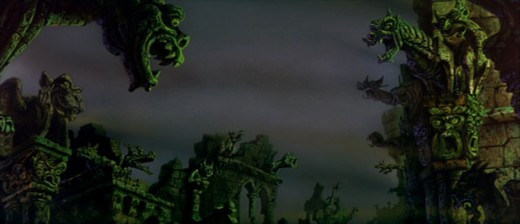
- I love the recreated background sites that Hans Bacher and Rob Richards have developed. On Animation Backgrounds, Rob has posted some backgrounds of the Witch’s Castle from Sleeping Beauty. I also really like seeing the two BGs he posted from Sword In The Stone and would love to see more from this film. 101 Dalmatians had a specific look to accomodate the new Xerographic process they were using in the cels. Sword In The Stone took another turn in its backgrounds, and I like both films.
It’s a real pleasure to visit both sites; I go there often. I can’t get enough of the Snow White BGs on Animation Treasures II.
Commentary 18 Oct 2007 08:02 am
Persepolis Thoughts
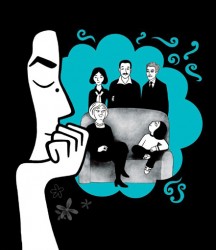 - Persepolis was very much the film I expected to see. The story was more sophisticated than can usually be found in animated features, and the artwork was more daring. It didn’t look or feel like any other film I’d seen. However, this also created problems that I expected, albeit none that really undermined the positives to be found in the film.
- Persepolis was very much the film I expected to see. The story was more sophisticated than can usually be found in animated features, and the artwork was more daring. It didn’t look or feel like any other film I’d seen. However, this also created problems that I expected, albeit none that really undermined the positives to be found in the film.
Marjane Satrapi and Vincent Paronnaud have crafted a thinking and thoughtful film about some very real problems in the world. In its finest moments, it speaks volumes about the problems of independent-minded women and is particularly interesting for this reason.
It doesn’t follow the Hollywood formula with heightened climaxes and overmodulated set pieces. There aren’t many phony emotions on display, and I can’t tell you how enjoyable that was for a change. Live action and animated films, these days, bring nothing less than the predictable, so it was nice to see something quieter and more valuable.
The film, of course, is an adaptation of Marjane Satrapi’s graphic novel. (Since it’s very much the real-life story of Ms. Satrapi one wonders if it should be called a “novel.”) The story takes its cues from this novel, and in the big picture it is an enormous task to have pulled off. As we follow young Marjane growing up and her relationships with her parents and grandmother, we also see the political changes in Tehran, Iran as that country twists and turns politically.
The adaptation from graphic novel to screen created the biggest complaint I had with the film. Like all graphic novels, the story develops in chapters, and the film closely follows suit. Each chapter has its own climax, and I’m not sure many are significantly larger than the other. Hence, there is a sameness that comes across as we move through the film. The art style also heightens this constancy to the point where it gets a bit tiring. One truly welcomes the few scenes done in muted colors whenever they slip into the story.
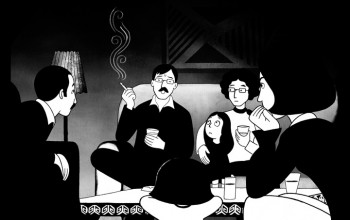 The art style faithfully adapts the art in the book, though it’s obvious that some of the illustration has gotten significantly more sophisticated enroute the big screen. There is often a level of transparent textured whites overlaying the characters giving it some real depth. Images in mirrors, for example, are depicted via this texture. Smoke and haze are also designed using these whites.
The art style faithfully adapts the art in the book, though it’s obvious that some of the illustration has gotten significantly more sophisticated enroute the big screen. There is often a level of transparent textured whites overlaying the characters giving it some real depth. Images in mirrors, for example, are depicted via this texture. Smoke and haze are also designed using these whites.
Some of the backgrounds are lovely in their own simplicity with textured off-whites over gray buildings. It takes on a look all its own; at times I felt a hint of some of Hubley’s more impressionist work. None of this seems to come across in the graphic novel nor in the film stills I’ve seen. These small sparks of strong graphic art were welcome in the otherwise stark black and whites. It’s amazing how far they were able to push this style. However, the art style doesn’t do much to allay the problem I had with the story; there’s an overall sameness to the style – however beautifully controlled it is.
The screening I saw was of a film in French with English subtitles. Matthew Clinton, a leading animator in my studio saw the film with me. He commented afterward that he had problems enjoying the graphics because he had to continuously read the subtitles. He felt the graphic style of the subtitles was jarring with the hard-lined style of the animated film. I, on the other hand, wondered if this made the film’s visual style richer because my brain had to take in two visual elements at the same time. Of course, I’ll see the dubbed version when it’s released and will let you know if it changed for me.
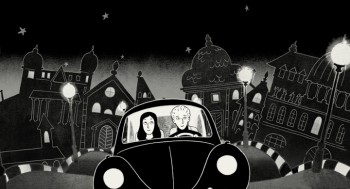 The film is a film; it’s not a cartoon. (Although there are a few annoying cartoon moments that pop up from time to time as they try to exaggerate the character, Marjane’s, emotions for comic effect.) The voices were excellent, particularly Danielle Darrieux as the grandmother and Catherine Daneuve as the mother. Of course, with those two actresses one would hardly expect less.
The film is a film; it’s not a cartoon. (Although there are a few annoying cartoon moments that pop up from time to time as they try to exaggerate the character, Marjane’s, emotions for comic effect.) The voices were excellent, particularly Danielle Darrieux as the grandmother and Catherine Daneuve as the mother. Of course, with those two actresses one would hardly expect less.
The animation moves quite fluidly, though I never quite felt that there was real personality in the movement. (That, however, is a complaint I have with even the highest budgeted film these days.) Vincent Parronaud was more the director of the animation than Marjane Satrapi, and Marc Jousset was the Art Designer. Christian Desmares was the Animation Director. There were twenty animators who drew the film in France. All of them should be proud of their accomplishment. The film was done for about 6 million Euros ($8.5 million).
This film takes animation in a direction it should be headed. It doesn’t try to revisit the mold that Disney developed nor does it try to cash in on cheap theatrics. It’s the best animated film I’ve seen in some time, and I hope it does well at the box office. Perhaps, then, there will be another film by this group.
Books &Comic Art 17 Oct 2007 07:48 am
Gumps III – On Vacation
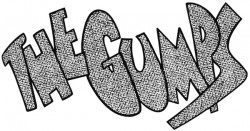 - Here’s the third cache of comic strips featuring The Gumps.
- Here’s the third cache of comic strips featuring The Gumps.
This is from an excellent book that was edited in 1974 by Herb Gallewitz and published by Scribners called Sidney Smith’s The Gumps.
As I mentioned in the last two posts, The drawing is funky, but the story is brilliant. I’m posting these so that you can get an idea of the rhythm of the strip and the characters. In the next couple of batches I post we’ll start getting into some serious story material.
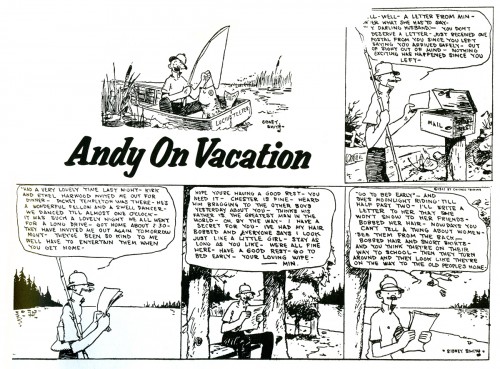
___(Click on any image to enlarge.)
Daily post 16 Oct 2007 08:12 am
Cooking Things Up
– Sunday night marked the closing of the NY Film Festival. The closing film of the festival was Persepolis, and it was reviewed in the NY Times by Stephen Holden. Here are a couple of quotes from his review:
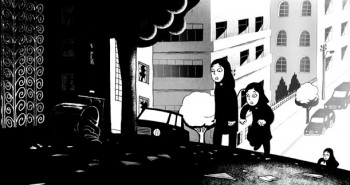 Because it is animated, “Persepolis†is a bold choice for the festival’s closing-night selection. “A cartoon?†you may sniff. “How dare they?†But the movie is so enthralling that it eroded my longstanding resistance to animation, and I realized that the same history translated into a live-action drama could never be depicted with the clarity and narrative drive that bold, simple animation encourages.
Because it is animated, “Persepolis†is a bold choice for the festival’s closing-night selection. “A cartoon?†you may sniff. “How dare they?†But the movie is so enthralling that it eroded my longstanding resistance to animation, and I realized that the same history translated into a live-action drama could never be depicted with the clarity and narrative drive that bold, simple animation encourages.
“Persepolis†makes you contemplate the processes of history. Buried under each wave of “reform,†it suggests, are cultural traditions that will eventually resurface no matter how repressive the climate of the moment. The movie is also tacitly feminist in its depiction of Islamist patriarchs as ludicrous misogynist prudes.
“Persepolis†has a lot in common with last year’s closing-night film, “Pan’s Labyrinth,†which portrays life in the wake of the Spanish Civil War through the eyes of girl who transmutes fear into ritualized fairy-tale fantasy. Both films are immeasurably enriched by examining war and social upheaval through innocent female eyes.
I saw the film last night and have had a lot of mixed thoughts about it. Ill report on those thoughts later this week after I’ve allwed them to settle for a bit.
Mark Mayerson, yesterday, found and posted some interviews with Marjane Satrapi answering questions at the NYFilm Fest. They’re worth a look if you’re interested.
- Are you interested in knowing what Chris Robinson‘s Mango Salad tastes like? Or would you like to know how Bruno Bozzetto makes Spaghetti and Meatballs. For desert would you like Jerry Beck‘s recipe for cupcakes?
The Art Institute of Pittsburgh has just such the cookbook for you. A bunch of animators have put their cooking thoughts on their favorite foods into menus for you.
Chocolate Crackel, Marillenknodel, Lamb Korma, Hot Cross Buns, Croque Monsieur, Fish Heads & Rice & Fried Bananas (yes animators are CWAZY!) These recipes are among many others in this great little book; the profits of which support the EDMC Education Foundation of the Art Institue of Pittsburgh.
To order the book, send checks or money orders payable to the
EDMC Foundation. The book sells for $10.
(Proper way to address the envelope)
Angela Love
Media Arts & Animation
Art Institute of Pittsburgh
420 Blvd. of the Allies
Pittsburgh, PA 15219
This is the Art Institute‘s site.
If you’d like to see an animated ad for the book go here.
Animation Artifacts &Books &Disney &Models &Story & Storyboards 15 Oct 2007 07:59 am
Rite of Spring Pics
- Continuing my posting of the art in the 1940 book, published by Simon & Schuster, Deems Taylor’s Fantasia, I focus on the Rite of Spring segment from the film. There are some fine images here, and I’m pleased to post them.
If anyone has any idea of who drew any of these stills, I’ll be glad to give appropriate credit to the artists. I know that
_______ William Martin,
_______ Leo Thiele,
_______ Robert Sterner and
_______ John Fraser McLeish were credited for Story Development Research,
and
_______ McLaren Stewart,
_______ Dick Kelsey and
_______ John Hubley were the segment’s Art Directors.
Here, then, are the stills. A number of them are beauties.
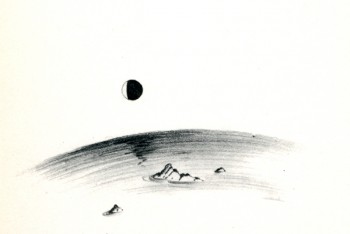
Photos 14 Oct 2007 09:28 am
Hats off Photosunday
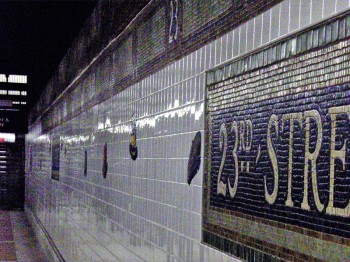 – You’ll remember back in August I promised to give you some more photos of the Art in the BMT. No, you don’t remember? I’d posted some photos from the Prince Street subway station which displays some silhouettes artistically tiled into the walls.
– You’ll remember back in August I promised to give you some more photos of the Art in the BMT. No, you don’t remember? I’d posted some photos from the Prince Street subway station which displays some silhouettes artistically tiled into the walls.
Well, I remember it, and today’s the day. I have images from the 23rd Street BMT station which displays hats. Yes, HATS. I wasn’t sure what this has to do with the subway or the BMT, but there are lots of hats floating about that station, and it intrigued me. So I went to the station specifically to take these photos. In fact, I was walking past it when I remembered that I wanted to photograph them.
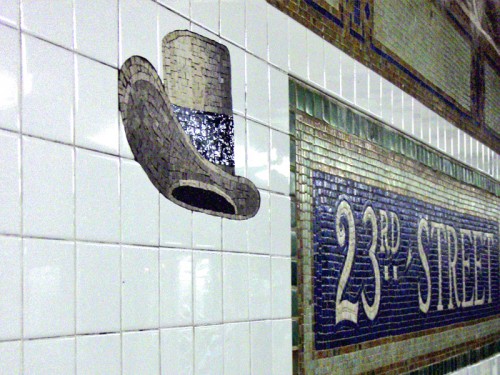
(Click any image you’d like to enlarge.)
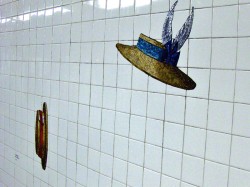 _
_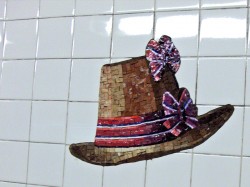
The exhibit is called Memories of 23rd Street and was designed and constructed by Keith Godard. A London-born graphic designer and artist Mr. Godard also designed the
14 ft. high-relief bronze historical plaques on the Brooklyn Bridge that, he insists, were inspired by Lorenzo Ghiberti’s ”Gates of Paradise” in Florence.
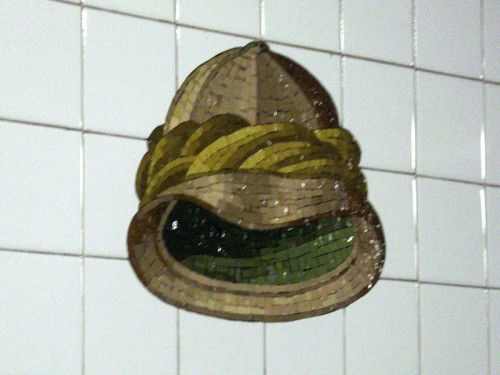
I learned that Mr. Godard’s idea for the piece is, apparently, two. First, he honors all the people who probably stood at this intersection since the station was built by picturing their hats.
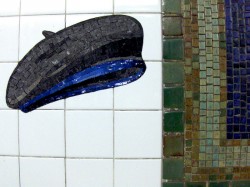 _
_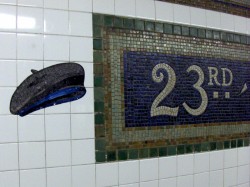
Secondly, the Flatiron Building (just above this station) once was notorious for the wind tunnel it created above ground. Hats went flying everywhere up and down 23rd Street.
Hence, the flying hats and the term “23 Skidoo.”
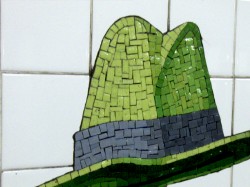 _
_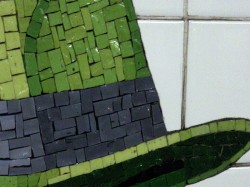
If you have the time (a train could be coming into the station just as you arrive, and you’ll have to rush on board missing the artwork), you can go in close to study the elaborate tile constructions.
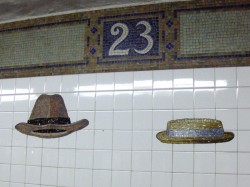 _
_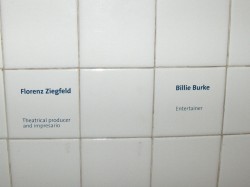
All of the hats are identified with little labels a couple of feet below the images. If you
check out the MTA’s site, you can see whose hats are flying about.
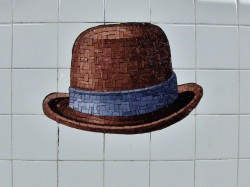 _
_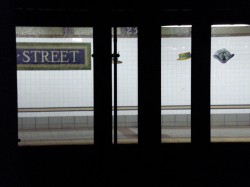
Since I came to see the HATS, I had all the time I wanted. I stood about snapping pictures and had the few early morning riders watching me. There, of course, were hats up and down both platforms in the subway station. I stayed on the one side – going Downtown.
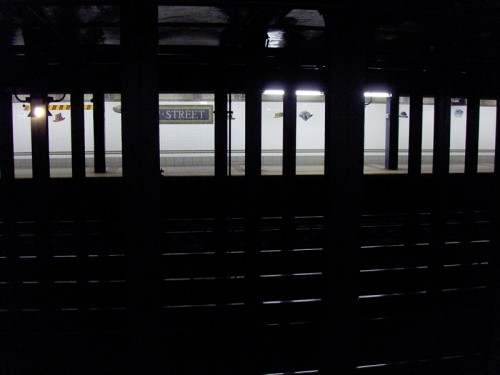
I let a couple of trains go by before leaving when I felt I’d shot enough.
Animation Artifacts &Articles on Animation &Disney 13 Oct 2007 08:00 am
Very Special Mouse
- This article came into my hands, and, unfortunately, I have no way of knowing where it was published. It apparently was published in the 50′s or early 60′s (the clue is the drawing on the last page of Mickey through the ages.)
At any rate I thought it was worth sharing. Interesting that it talks, predominantly, about Mickey in the 30′s.
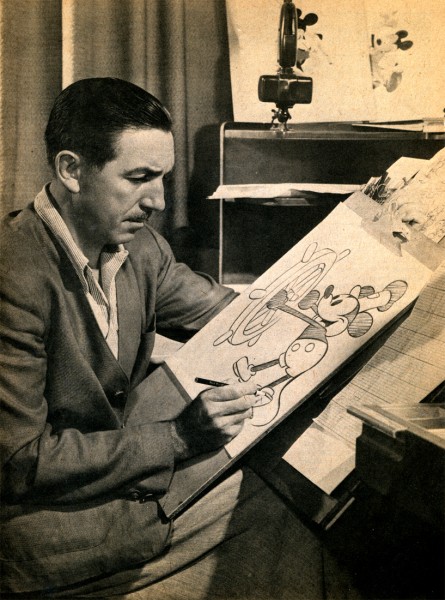
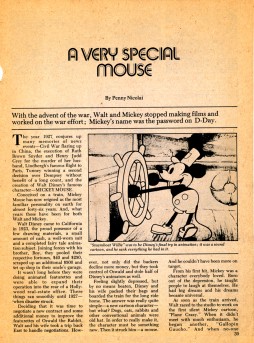 _
_ 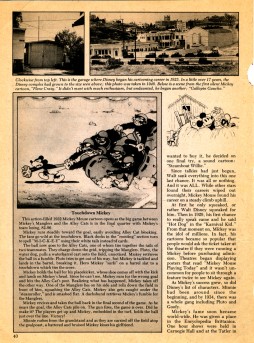
(Click any image to enlarge.)
Animation &Animation Artifacts &Disney 12 Oct 2007 08:13 am
Kahl’s Jungle Book
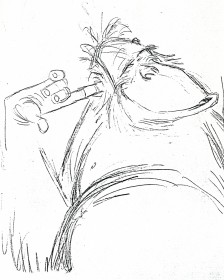 – Since there was such popularity with the post I had put up earlier this week about The Jungle Book, and since the new DVD is being celebrated everywhere, I thought I’d post some more bits I have from that film.
– Since there was such popularity with the post I had put up earlier this week about The Jungle Book, and since the new DVD is being celebrated everywhere, I thought I’d post some more bits I have from that film.
These are some of the drawings by Milt Kahl from a sequence featuring King Louie doing a dance. It’s interesting that I think immediately of Shere Kahn as Milt Kahl’s work, and I don’t think of Louie. Yet I’ve had these copies for the past 25 years.
Somewhere – I have to find it – I remember Walt Disney being quoted as having said the one thing you should never animate is a monkey. They’re funny enough in real life; animation can’t improve on them. I remember thinking of that quote the day I first saw this film. I also wondered how Louis Prima felt knowing that they were representing him as an orangutan. I suppose that’s not a monkey.
The copies of these drawings I have are xeroxes. I’m posting them for the magnificent drawing alone; I don’t have timing sheets to be able to work out the movement. Honestly, with Milt Kahl’s work, looking at the images alone should be enough. I apologize if these are at all fuzzy or grey; that’s the quality of the images I have. They’re also not full sheets of animation paper. I copied only the peg holes and drawings.
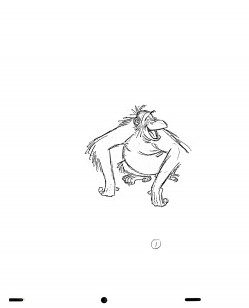 01
01 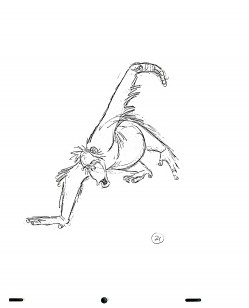 21
21
(Click any image you’d like to enlarge.)
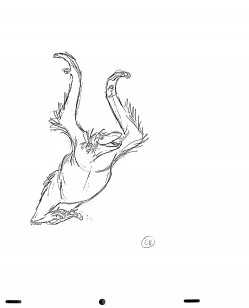 66
66 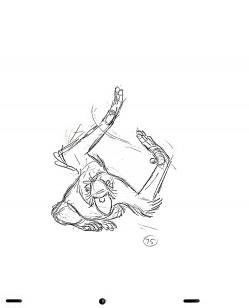 75
75
Talk about breaking of joints,
_______________this scene couldn’t be a greater lesson in animation for you.
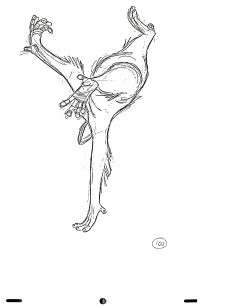 00
00 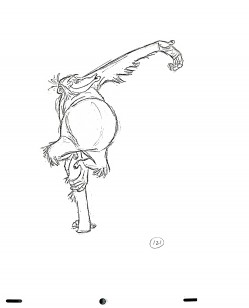 21
21
I know I don’t have to say, but I will; these drawings are extraordinary.
#100, here on the left, is a masterpiece in weight, balance, forshortening and sheer brilliance. And it’s only one frame from a scene.
By the way, Michael Barrier is back (Oct.11th), and he opens with some comments about The Jungle Book as well as a reprint of his 1978 Funnyworld review.
